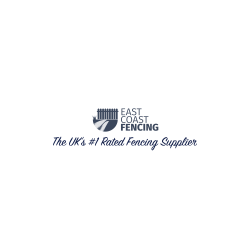The Dos and Don'ts with Artificial Grass: A Comprehensive Guide

Artificial grass, once primarily seen on football pitches and other sporting venues, has made its way into domestic gardens and public spaces around the globe. Its low maintenance, durability, and year-round green aesthetic are just a few reasons behind its growing popularity. However, to ensure that your artificial turf remains in top condition, it's crucial to understand what you should (and shouldn't) do. This comprehensive guide will walk you through the essential dos and don'ts with artificial grass.
The Dos with Artificial Grass
Do Choose High Quality
Investing in high-quality artificial grass is paramount. Look for options that are UV stabilised to prevent fading, have good drainage, and offer a warranty. This ensures your artificial grass looks great and lasts for years to come.
Do Regular Cleaning
While artificial grass requires less maintenance than real grass, it still needs regular cleaning to look its best. Remove leaves and debris with a leaf blower, a plastic rake, or a stiff brush. A gentle rinse with a hose can help keep the grass fibres looking fresh and vibrant.
Do Disinfect Occasionally
If you have pets that use the artificial grass, it’s essential to clean and disinfect the area regularly to prevent odours and bacteria buildup. Use pet-friendly, non-toxic disinfectants designed for artificial grass.
Do Flatten Fibres Gently
Heavy foot traffic can flatten the fibres of your artificial grass. To revitalise its appearance, simply brush the fibres gently with a stiff brush or a broom against the grain. This lifts the fibres and helps maintain its natural look.
The Don'ts with Artificial Grass
Don't Use Harsh Chemicals
Avoid cleaning your artificial grass with harsh chemicals, as they can damage the fibres and reduce its lifespan. Always opt for gentle, nature-friendly, and recommended cleaning products.
Don't Place Hot Items on the Grass
Artificial grass can melt or get damaged when in contact with hot objects. Avoid placing barbecue grills directly on the turf. Similarly, don't discard hot coals or smoking materials on your artificial lawn.
Don't Ignore Weed Barrier Installation
One of the advantages of artificial grass is its resistance to weeds. However, neglecting to install a proper weed barrier during the installation process can allow weeds to grow through the turf. Ensure a high-quality weed membrane is placed underneath to prevent this issue.
Don't Use Sharp Objects
Be cautious when using garden tools or sharp objects on or near your artificial grass. Sharp edges can cut or rip the turf. If furniture or garden toys need moving, lift rather than drag them across the surface.
Additional Tips for Maintaining Your Artificial Grass
- Brush Regularly: Regular brushing keeps the grass fibres upright and helps distribute infill material evenly.
- Address Stains Promptly: Spills and stains should be cleaned immediately to prevent permanent damage. Most spills can be washed away with water, but for stubborn stains, use a mild detergent solution.
- Protect Against Fire: Be mindful of fire sources, including fireworks, bonfires, and lit cigarettes, as artificial grass is not fireproof.
- Mind the Weight: Heavy items can compress the base material of artificial grass, causing dips and uneven surfaces. Distribute weight evenly and avoid placing excessively heavy objects on your turf.
Conclusion
The decision to switch to artificial grass comes with numerous benefits, including less upkeep, no watering, and an everlasting lush appearance. By following these dos and don'ts, you can ensure that your artificial lawn remains beautiful, functional, and durable for many years. Whether for a small garden space, a pet area, or a large outdoor venue, artificial grass can provide the aesthetic appeal of a natural lawn with minimal fuss. Remember, the key to a long-lasting artificial lawn lies in proper care, maintenance, and usage.














Leave a Comment